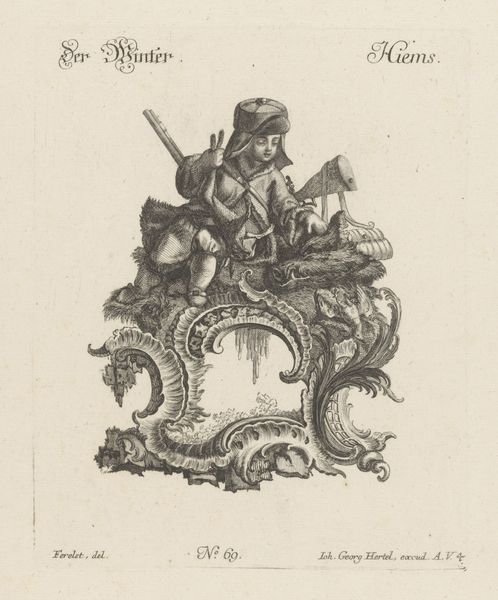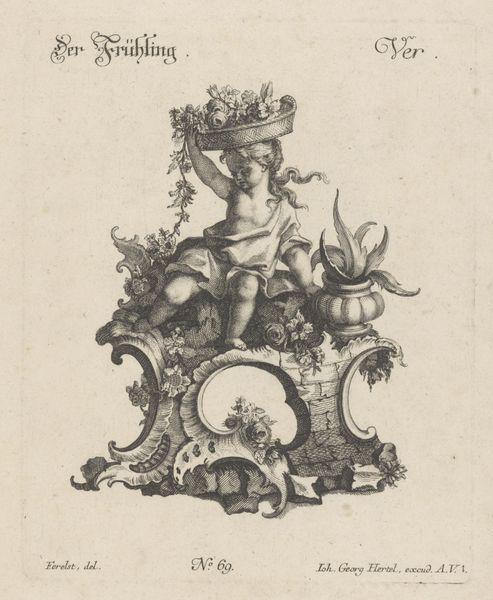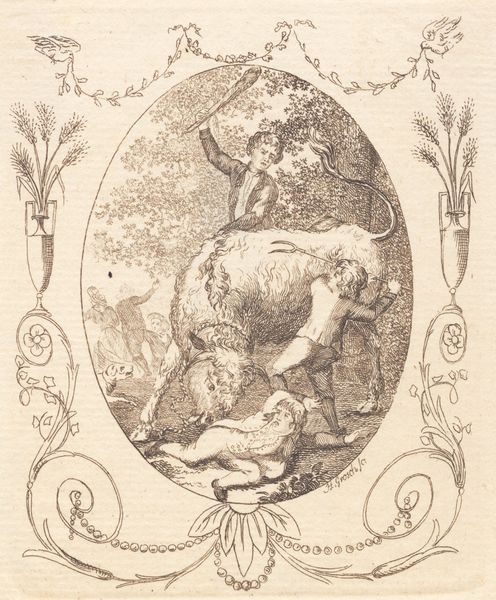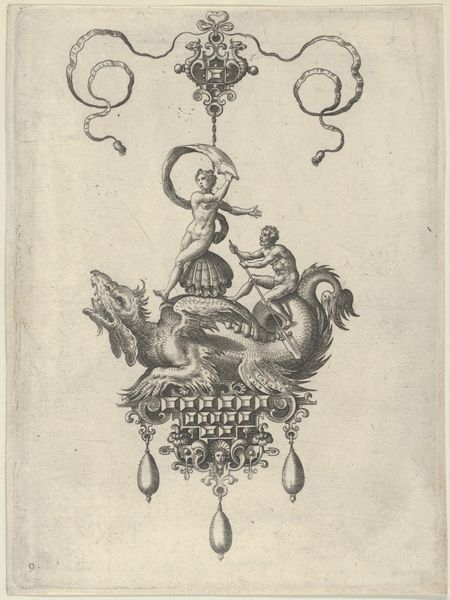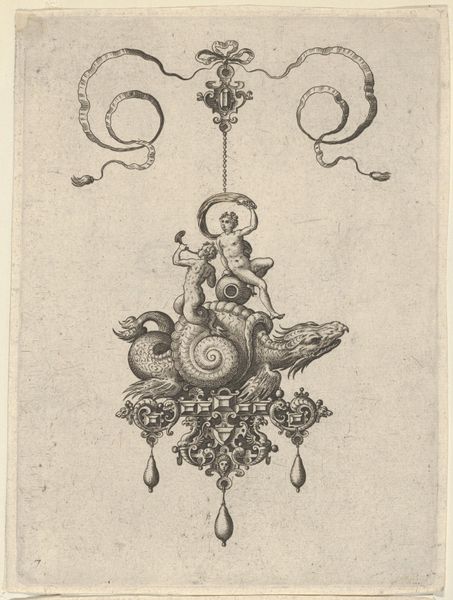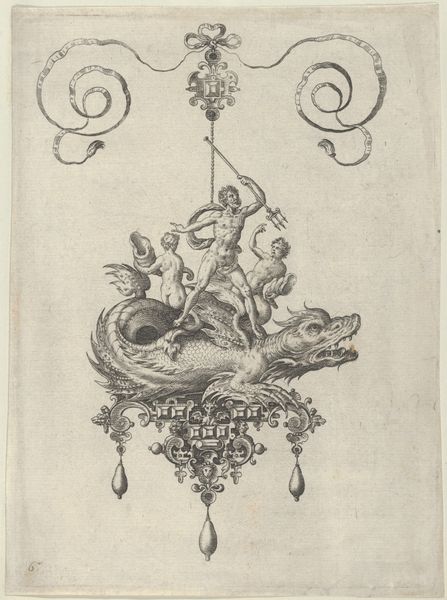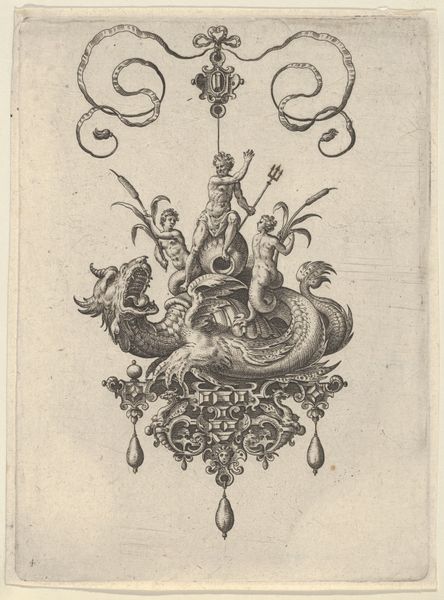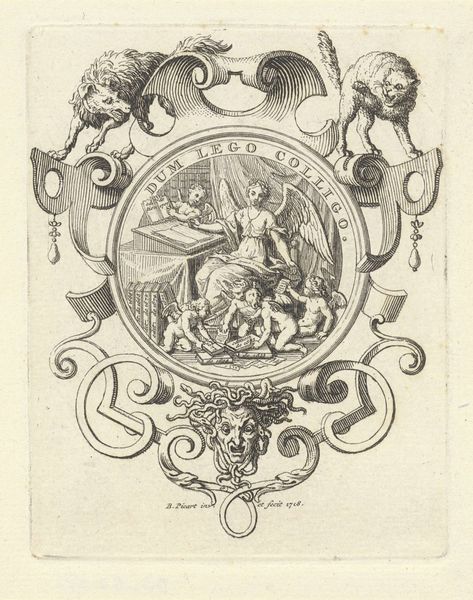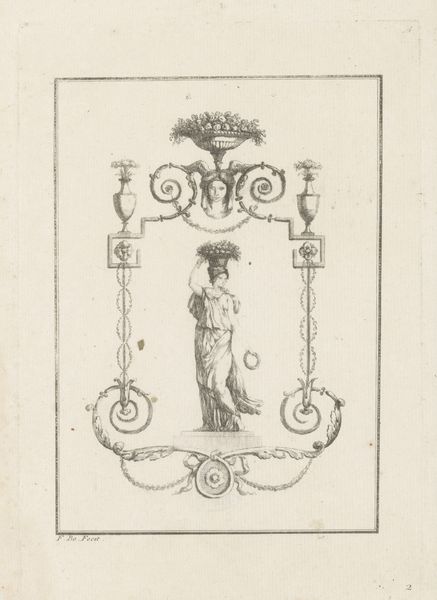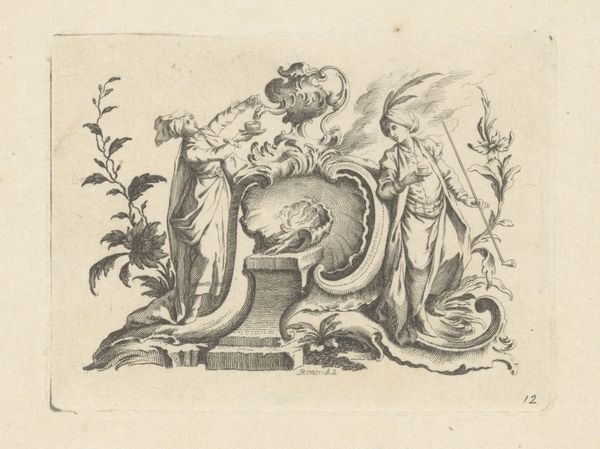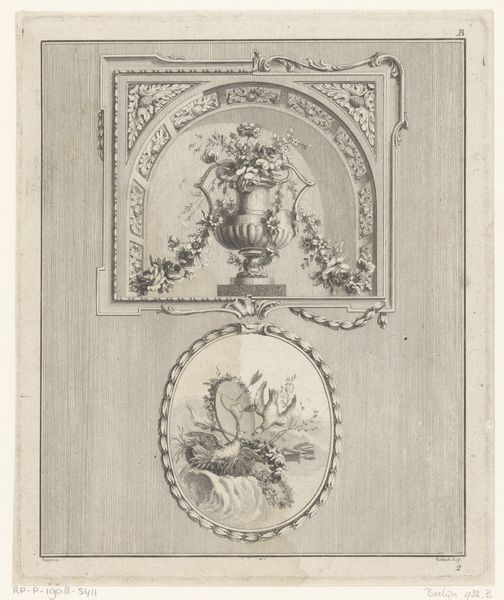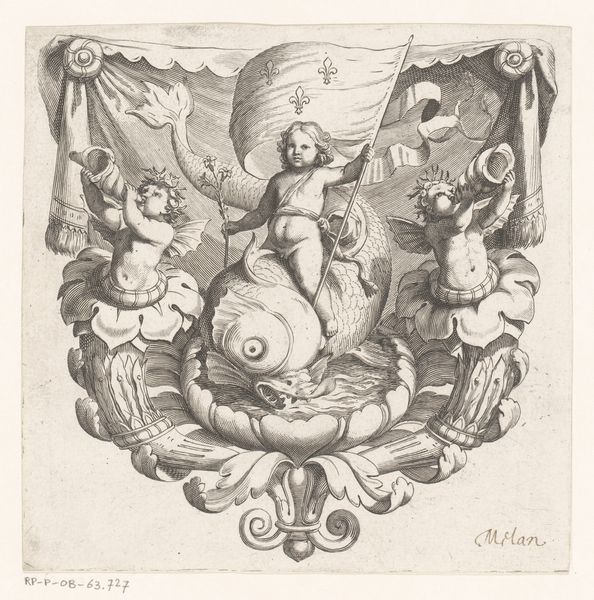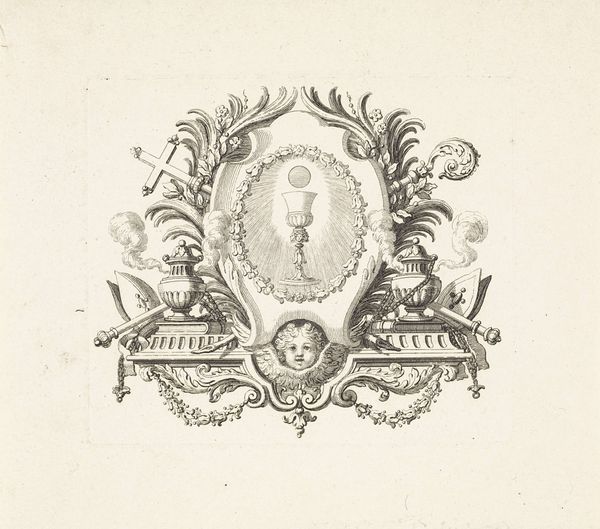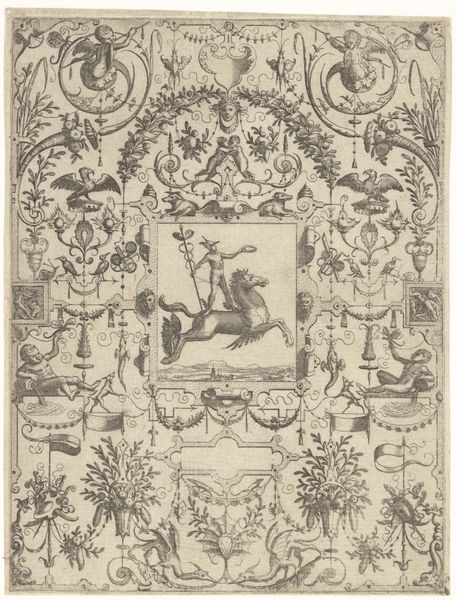
engraving
#
allegory
#
baroque
#
figuration
#
history-painting
#
engraving
Dimensions: height 228 mm, width 186 mm
Copyright: Rijks Museum: Open Domain
Curator: Here we have an engraving titled "Zomer," dating back to somewhere between 1737 and 1775. It's part of the Rijksmuseum's collection and is attributed to an anonymous artist. Editor: It strikes me as oddly peaceful. Even though it's black and white, there’s a lightness to it, especially with that cherubic figure holding what looks like a sickle. The ornate scrollwork at the bottom grounds the entire image with a weighty visual foundation. Curator: Exactly! It's an allegory of Summer, or “Aestas” as inscribed above the figure, rendered through the symbols of the season. We can tell it was made using the intaglio printmaking method—observing the crisp, etched lines in the paper, which involves cutting an image into a metal plate. What makes the printing itself interesting is thinking about its intended purpose. These prints would often circulate as examples of craftsmanship, influencing designs across various applied arts. Editor: So it wasn't just a decorative piece? It also served a practical, almost instructional purpose. That sickle then suggests the labor, the harvest associated with summertime, connecting this image to the agricultural practices and the working classes. Curator: Precisely. Notice the sheaves of wheat the figure is sitting on and that there is a quiver of arrows, indicating perhaps some of the allegorical elements also hint to a sort of abundance found at that time. There is an integration of labour, skill, design, and representation intertwined. The print becomes not just an artwork but a document of cultural values around craft. Editor: The quiver seems like a symbolic reference to hunting as food procurement for the future which, when paired with the wheat, really underscores summer's role as a provider. The scrollwork feels separate, more of a design flourish that frames the thematic scene in a decorative container that can be applied on many things. The "Allegory of Summer" reminds people of prosperity to come. Curator: Well, looking closely at the materials and mode of its making highlights both the artisanal processes central to its production and the exchange of skills and ideas at the time, not just a reproduction for personal display, but also a functional artifact influencing contemporary crafts. Editor: Seeing this work through a lens of embedded symbolism reveals an intimate portrayal of summer and that agricultural productivity sustains both the body and the culture through images carrying collective memory. Curator: Fascinating how considering labor and material informs how symbols in artworks functioned historically, beyond a simple representation. Editor: Absolutely, it adds a whole new layer of understanding to the artwork's legacy and relevance.
Comments
No comments
Be the first to comment and join the conversation on the ultimate creative platform.
